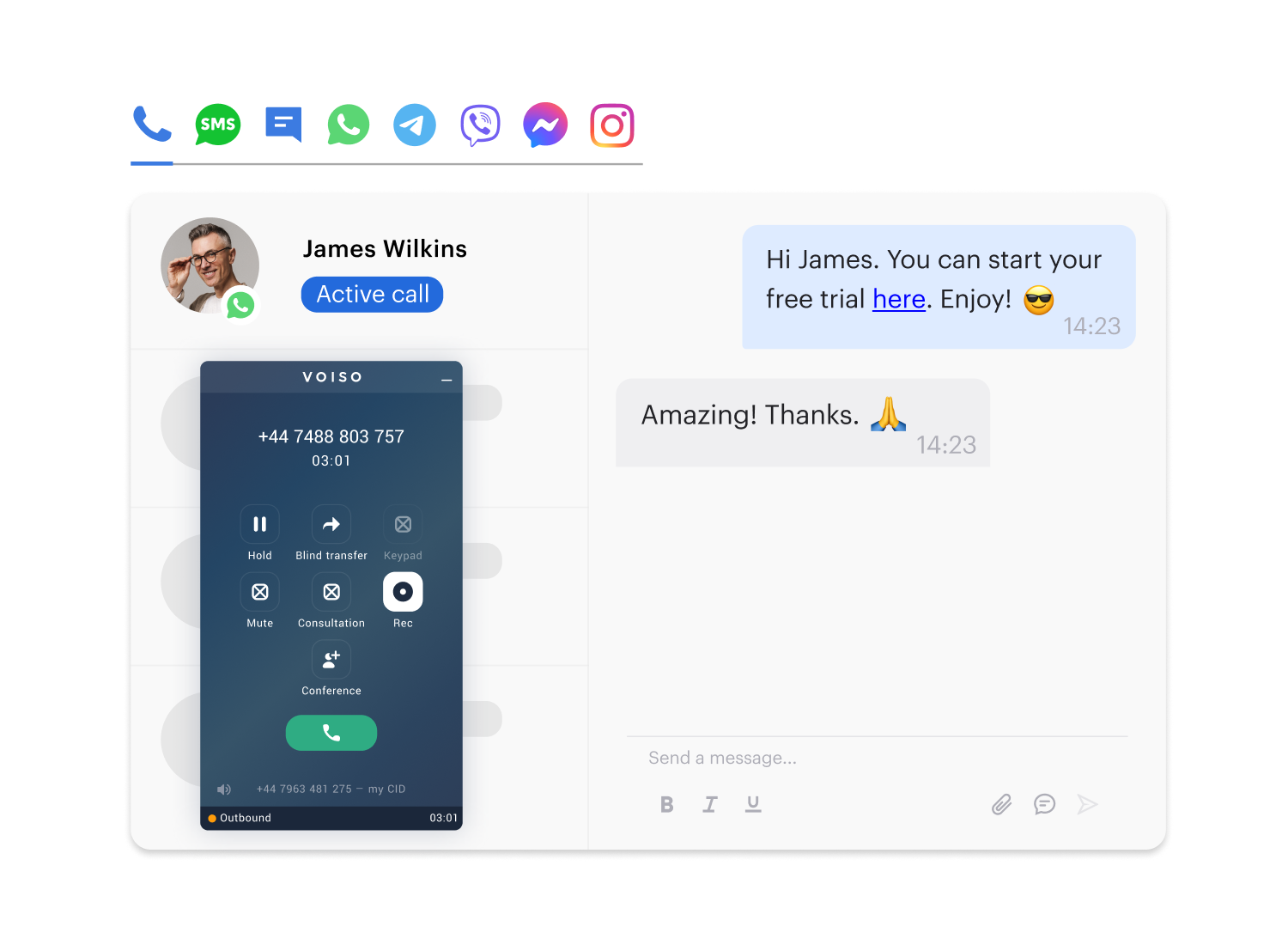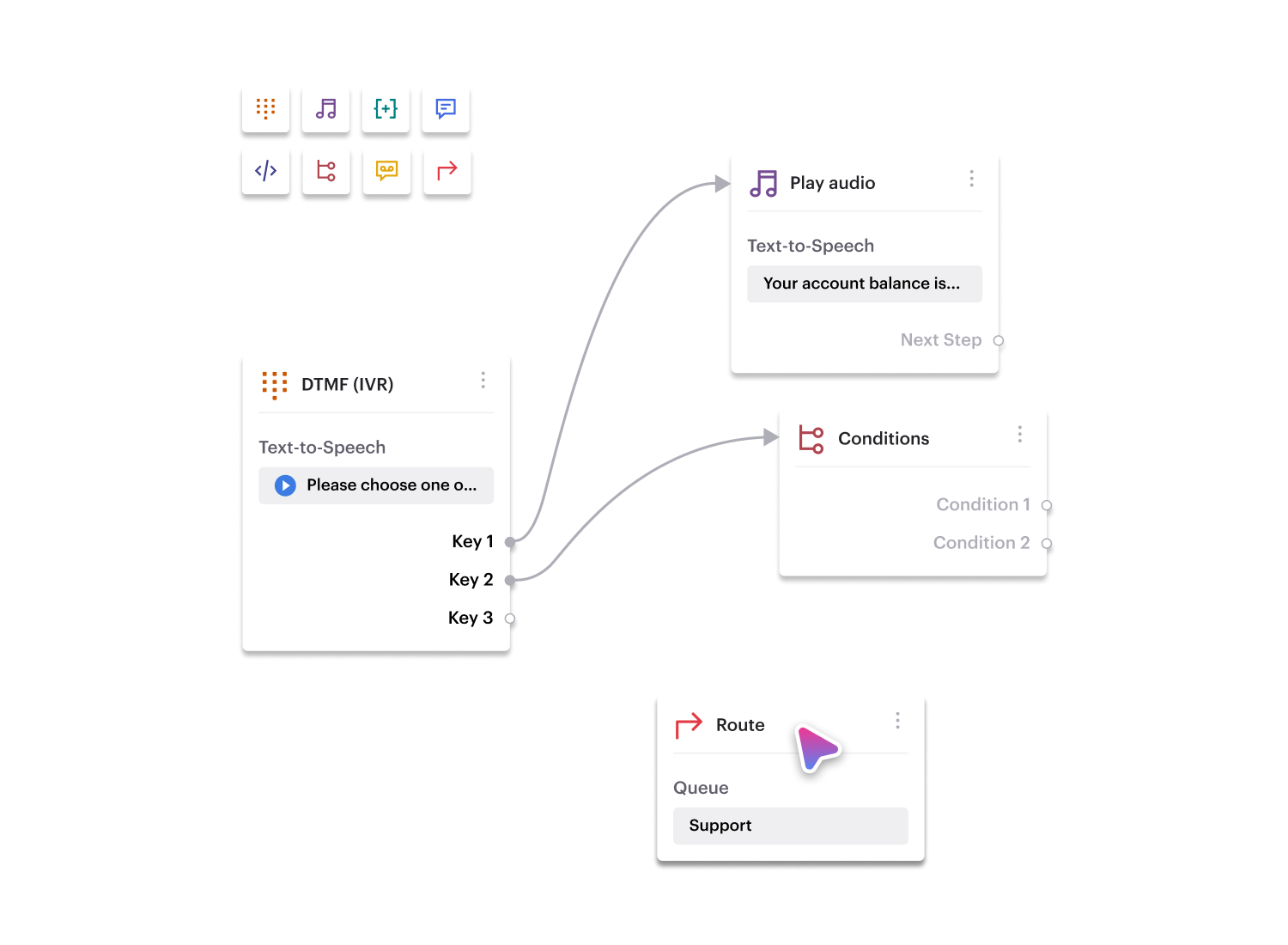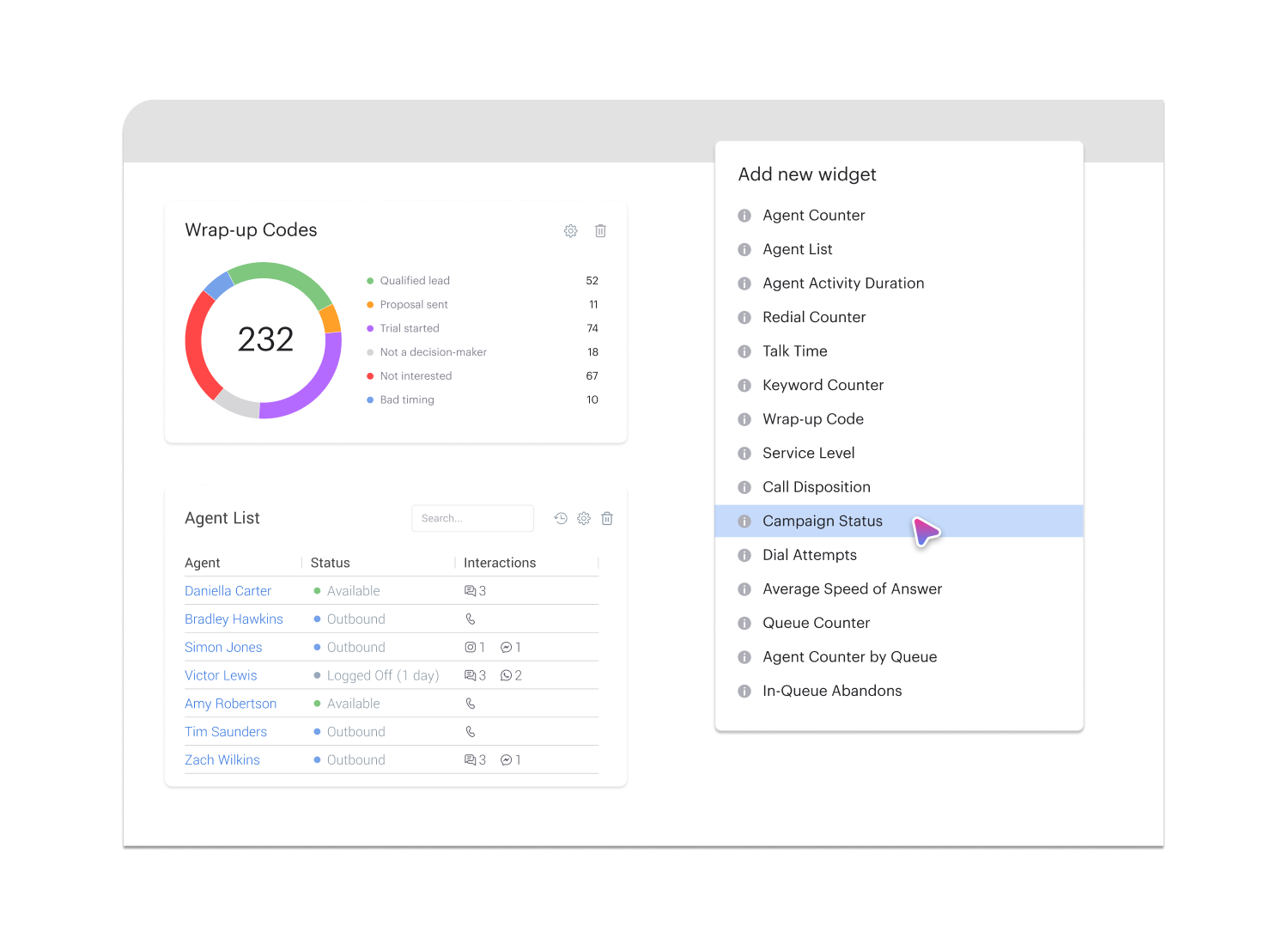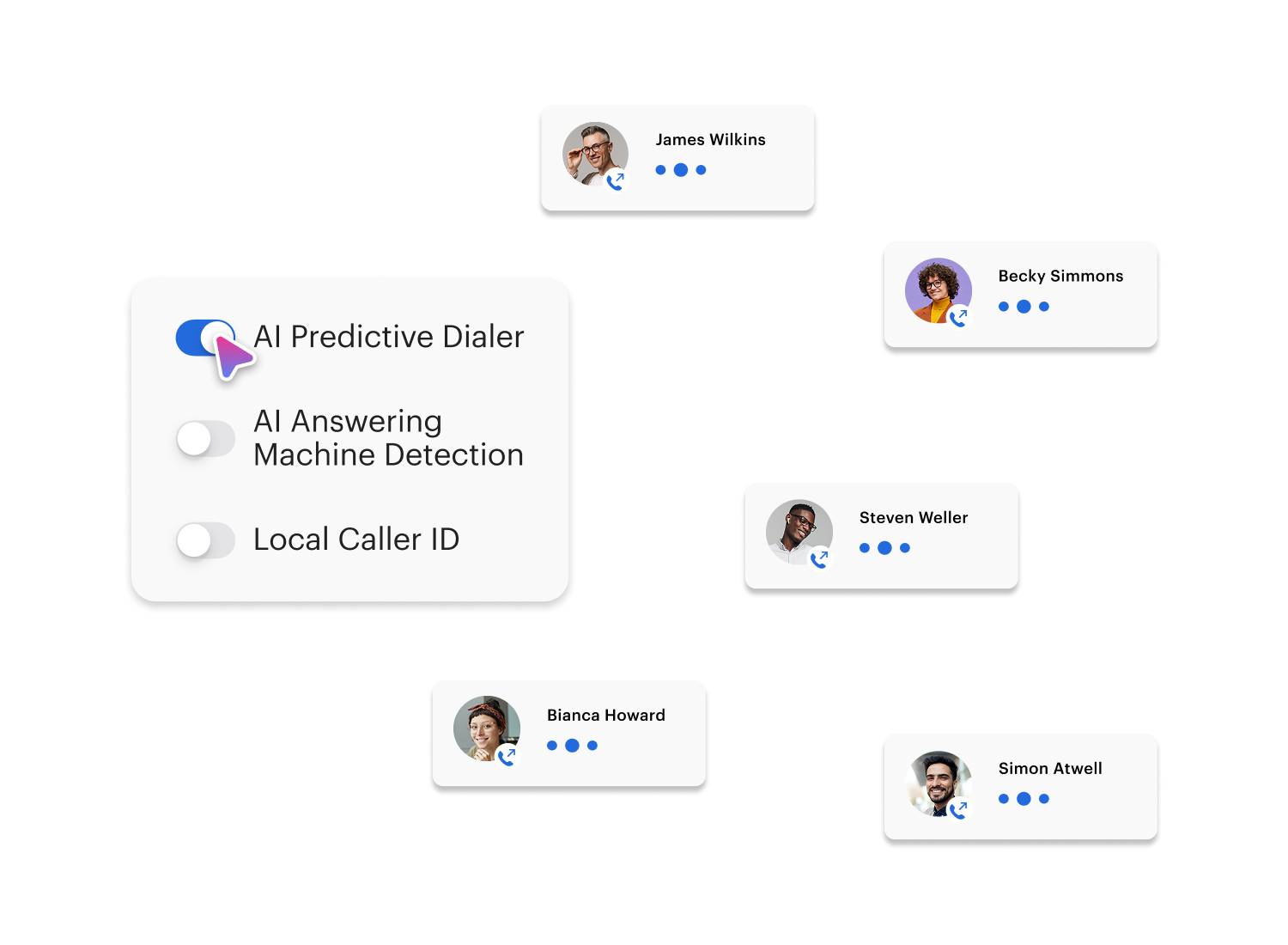AI Voice Analytics For Contact Centers
Transform conversations into powerful intelligence
Unlock the full potential of your customer interactions with Voiso's AI Speech Analytics. Gain deeper insights, improve agent performance, and enhance customer experience — all while maximizing the efficiency of your contact center.
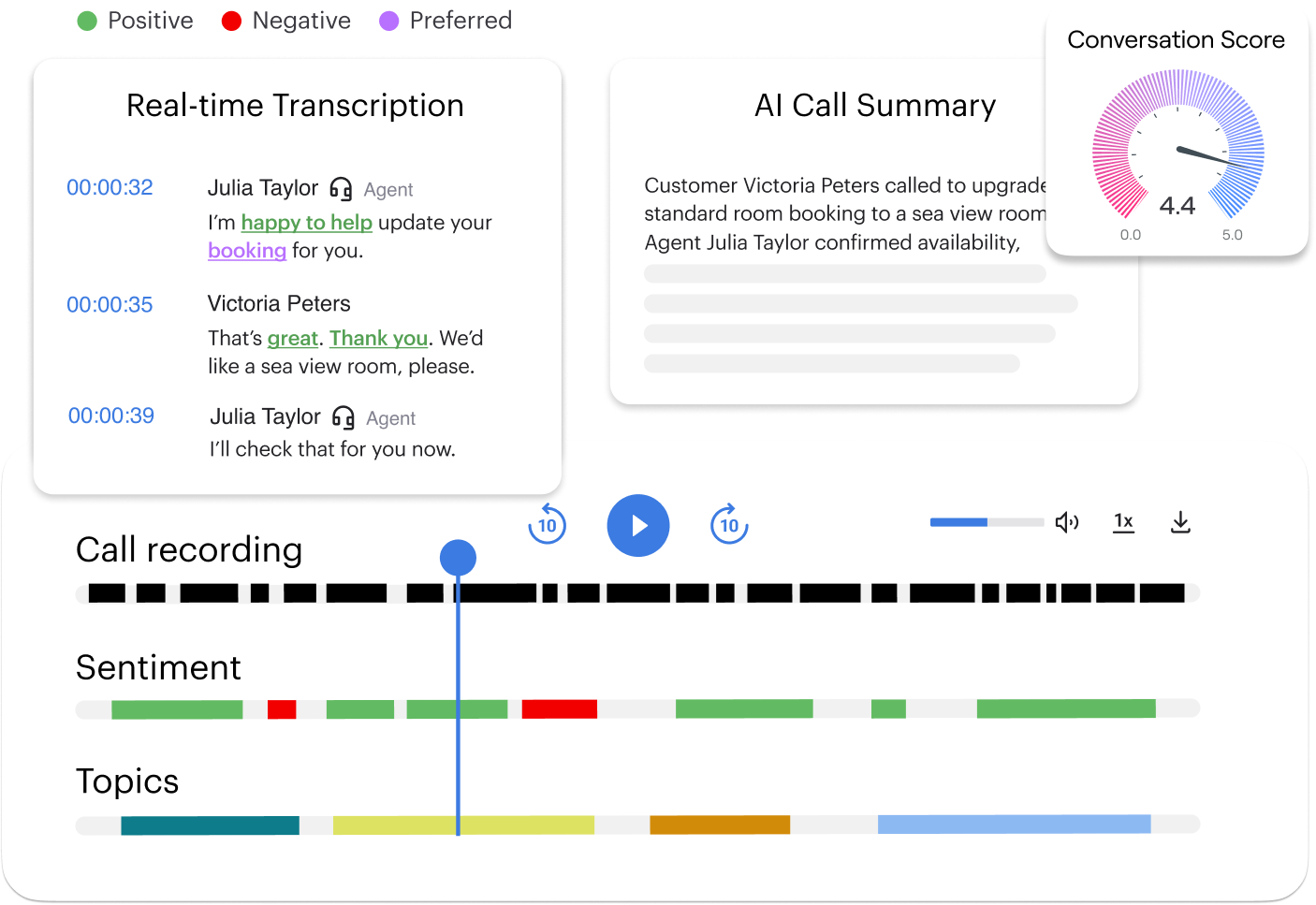
Unlock new insights
Call Scoring
Gain objective, data-driven insights into agent performance with Voiso’s AI Call Scoring. Automatically analyze every call to identify top performers, pinpoint areas for improvement, and ensure consistent quality. This leads to happier customers and a more successful contact center.
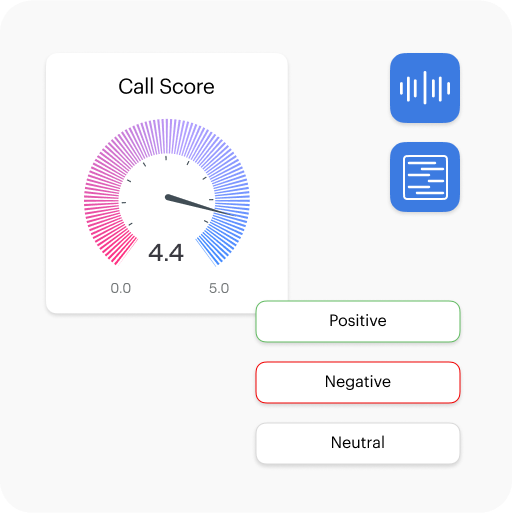
Call Transcription
Tired of missing critical details in customer calls? Voiso’s AI instantly transcribes every conversation in multiple languages, turning spoken words into searchable text. Quickly find key insights, ensure compliance, and improve customer experiences — all without having to listen to a single recording.
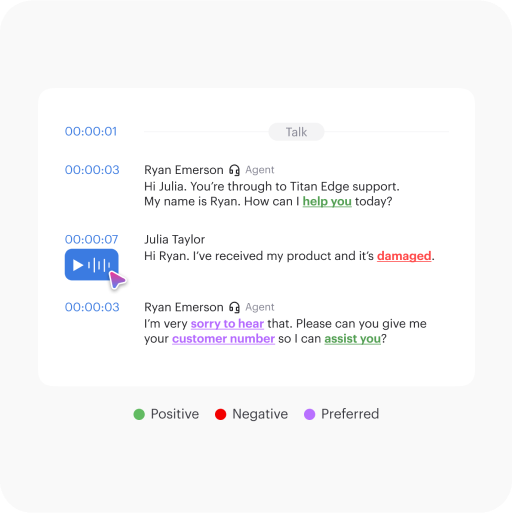
Call Summaries
Voiso’s Call Summaries feature automatically generate concise recaps of every conversation, highlighting key topics, action items, and customer sentiment. Quickly understand the essence of every interaction, improve agent efficiency, and make better-informed decisions.
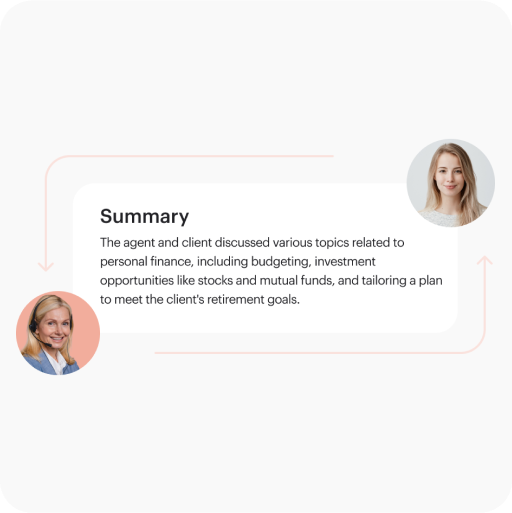
customers

Get started in less
than 24 hours
Frequently asked questions
What is Speech Analytics in AI?
Speech Analytics is a powerful technology that uses artificial intelligence to analyze and understand your customer conversations. It can automatically transcribe calls, identify key topics and trends, and even gauge customer sentiment. This gives you valuable insights into how your contact center is performing and how you can improve the customer experience.
How does Speech Analytics work?
Speech analytics uses a combination of speech-to-text and natural language processing to turn spoken audio into actionable insights:
- Audio Capture and Preprocessing
– Ingests audio from calls or recordings.
– Often applies noise reduction and segmentation for clarity. - Speech-to-Text (ASR)
– Uses deep learning models (acoustic + language) to convert audio into text. - NLP and Text Analysis
– Extracts keywords, entities, and sentiment from transcripts.
– Identifies trends and common themes. - Reporting and Insights
– Aggregates findings into metrics and dashboards (e.g., compliance, performance, customer sentiment).
– Provides real-time alerts and helps pinpoint root causes. - Continuous Improvement
– Refines acoustic and language models using feedback and new data.
– Adapts to domain-specific vocabulary over time.
What are the benefits of Speech Analytics?
Speech Analytics offers a wealth of benefits for contact centers, including:
- Improved customer experience: Identify customer pain points and frustrations to proactively address them. Analyze sentiment with speech analytics tools to ensure interactions are positive and respectful.
- Enhanced agent performance: Identify areas for agent improvement through coaching and targeted training. Track key metrics to measure agent effectiveness and identify top performers.
- Increased operational efficiency: Streamline calling and identify opportunities for automation. Reduce average handle time and improve first call resolution rates.
- Mitigated risk: Ensure compliance with regulations by monitoring calls for adherence to specific guidelines with real time speech analytics. Identify potential security threats or fraudulent activity.
What is speech analytics for customer service?
Speech analytics for customer service is an AI-powered technology that analyzes customer interactions – both live and recorded – to extract actionable insights. Using advanced Natural Language Processing (NLP) and machine learning, it evaluates the content, tone, and sentiment of conversations at scale. This technology automatically tags calls with key topics, detects patterns in customer sentiment, and identifies areas for improving service quality. Unlike traditional manual monitoring, speech analytics enables businesses to uncover customer pain points, enhance agent performance, and personalize customer experiences—all in real time.
What are the metrics of Speech Analytics?
Speech analytics provides a wealth of metrics to evaluate both agent performance and customer experience. Key metrics include average handling time (AHT), hold time, transfer rates, and first call resolution (FCR). Additionally, it tracks customer sentiment, call escalation rates, script adherence, and keyword trends across conversations. These metrics not only measure efficiency but also uncover deeper insights, such as customer frustration triggers and agent knowledge gaps.
What are the models of Speech Analytics?
Speech analytics models are designed to analyze and extract insights from customer interactions. The most effective models offer the following capabilities:
- Contact Center Optimization: Built specifically for noisy environments, these models handle low audio quality and diverse accents, ensuring accurate transcription and analysis even in challenging scenarios.
- Customizable Term Recognition: Advanced models allow businesses to define industry-specific jargon and terms, enabling more precise tagging and categorization of calls.
- Sentiment and Emotion Analysis: By detecting tone, sentiment, and emotional cues in conversations, these models provide deeper insights into customer satisfaction and frustration.
- Real-Time Quality Enhancements: Models that integrate real-time processing deliver immediate agent guidance, flag compliance risks, and help ensure consistent customer experiences.
- Predictive Analytics: Some models use machine learning to forecast trends, identify at-risk customers, and recommend proactive measures to prevent churn.
What is the difference between Speech Analytics and Voice Analytics?
Speech analytics and voice analytics are complementary tools that serve different purposes in analyzing customer interactions:
- Speech Analytics: Focuses on the content of conversations. It analyzes the words and phrases spoken to identify patterns, detect keywords, and derive insights into customer intent, sentiment, and behavior. This is ideal for understanding “what” is being said.
- Voice Analytics: Examines the vocal characteristics, such as tone, pitch, pace, volume, and emotional intensity. It focuses on “how” something is said, providing insights into the emotional state of the speaker and the overall tone of the interaction.
Can voice and Speech Analytics integrate?
Yes, voice and speech analytics can seamlessly integrate to provide a comprehensive understanding of customer interactions. While speech analytics focuses on the content of conversations (the “what”), voice analytics examines vocal characteristics such as tone, pitch, and emotional cues (the “how”).
When integrated, these tools offer several benefits:
- Advanced Sentiment Analysis: Combining spoken words with tonal insights provides a deeper understanding of customer emotions and intent.
- Improved Agent Performance: By analyzing both the content and delivery of conversations, managers can identify precise areas for agent coaching and training.
- Comprehensive Insights: Integration helps uncover hidden trends, from common customer pain points to emotional triggers, enabling more targeted improvements in customer experience.
- Real-Time Support: Integrated analytics can provide live feedback to agents, guiding them to adjust their tone or messaging based on the ongoing interaction.
Is Speech Analytics considered AI?
Yes, speech analytics is considered a branch of Artificial Intelligence (AI). It utilizes advanced AI technologies to analyze spoken words and extract actionable insights from customer interactions. These technologies include:
- Automatic Speech Recognition (ASR): Converts spoken language into text with high accuracy.
- Natural Language Processing (NLP): Understands and interprets the context, intent, and meaning behind words.
- Machine Learning (ML): Continuously improves the accuracy and efficiency of analysis by learning from data patterns over time.
- Sentiment Analysis: Detects emotions and attitudes in speech to gauge customer satisfaction.
- Acoustic Analysis: Examines tone, pitch, and pace to identify stress levels or emotional cues.
When does adding a speech analytics to your contact center make sense and why?
Adding speech analytics to a contact center makes sense when you have high call volumes, a need for deeper customer insights, or strict compliance requirements. It enables you to instantly transform conversations into data you can track, analyze, and act upon—reducing manual work and uncovering patterns that drive better decisions.
Why It Makes Sense
- Better Customer Insights
– Identify trending topics, common complaints, and service roadblocks more quickly.
– Leverage sentiment analysis to gauge satisfaction and adjust your approach in real time. - Compliance and Quality Assurance
– Automatically flag calls for specific legal or policy disclosures.
– Enforce internal scripts and detect missed or incorrect statements to avoid penalties. - Operational Efficiency
– Quickly surface opportunities for agent coaching or workflow improvements.
– Replace or reduce manual call audits with automated keyword spotting, saving time and resources. - Personalized Service
– Tailor product or service offerings by detecting customer needs from their language and tone.
– Enable real-time prompts for agents to upsell, cross-sell, or address key issues on the call. - Data-Driven Decision Making
– Real-time dashboards and analytics reveal trends in customer behavior.
– Target root causes (e.g., product flaws or recurring billing issues) and track improvements.
Use Cases by Industry
- Financial Services
– Compliance: Automatically monitor for regulatory disclosures (e.g., KYC, disclaimers).
– Fraud Detection: Spot suspicious language patterns or customer behavior. - Healthcare
– Patient Experience: Evaluate sentiment around service quality or billing.
Regulatory Adherence: Confirm HIPAA disclosures are followed. - Retail & E-Commerce
– Customer Satisfaction: Pinpoint product returns or stock issues.
– Upsell & Cross-Sell: Identify signals for product recommendations during calls. - Telecommunications
– Tech Support Optimization: Resolve frequent technical complaints more efficiently.
– Competitive Intelligence: Track competitor mentions or churn threats. - Travel & Hospitality
– Guest Feedback: Gauge satisfaction or issues with bookings and accommodations.
– Brand Reputation: Recognize emerging problems (e.g., site outages, service disruptions) fast. - Utilities & Energy
– Service Inquiries: Understand recurring billing or outage complaints.
Resource Optimization: Detect which processes agents spend the most time on.
How does Voiso’s AI speech analytics compare to other solutions?
| Provider | Speech Analytics Features | Transcription & Languages | Sentiment & Call Scoring | Compliance Tools | Pricing | Ideal For |
|---|---|---|---|---|---|---|
| Voiso | Real-time transcription, AI call summaries, keyword tagging, topic detection, emotion labels | Transcribes in 10+ languages in seconds (e.g., English, Arabic, Spanish) | Conversation scoring, silence detection, tone/emotion labeling | GDPR, PCI DSS; pausing on sensitive data input; CDR-level access | Included in platform; usage-based billing only | BPOs, fintech, QA teams needing fast, multilingual call analysis |
| CallMiner | Omnichannel analytics, sentiment/emotion detection, agent guidance | Supports 20+ languages; high transcription accuracy | Advanced scoring models, predictive behavior analysis | HIPAA, PCI, GDPR, SOC 2 compliance features | Enterprise-level licensing, high TCO | Large-scale enterprises with deep QA/compliance needs |
| NICE Enlighten | Behavioral KPIs, customer intent detection, agent coaching insights | Multilingual support, enterprise-level STT engine | Scoring tied to CSAT/NPS goals, intent modeling | Supports ISO/PCI/SOC compliance with redaction tools | Enterprise SaaS; multi-module pricing | Compliance-focused CX teams in finance, healthcare, insurance |
| Observe.AI | Call QA automation, topic heatmaps, performance coaching | English + Spanish (expanding), near real-time processing | AI call scoring, silence analysis, objection handling markers | Audit logs, data masking, secure agent access | Custom pricing for mid-enterprise teams | Sales/service orgs seeking QA visibility and agent coaching |
| Gong.io | Sales conversation analytics, coaching triggers, deal tracking | English-focused, some multilingual support (non-core) | Rep performance scoring, keyword/phrase tracking | Basic masking tools, focused on sales data usage | Per-user license, expensive for large teams | Sales-led orgs wanting visibility into revenue conversations |
| Chorus.ai (ZoomInfo) | Call recording insights, conversation topics, coaching tools | English-first, limited global STT capacity | Scoring based on talk ratio, keyword usage, objections | Basic data handling; lacks strong enterprise compliance | Bundled with ZoomInfo; higher total cost | Mid-market sales teams using ZoomInfo or similar CRMs |


